Head-to-Head: Apple iPhone 6 vs. Samsung Galaxy Note Edge
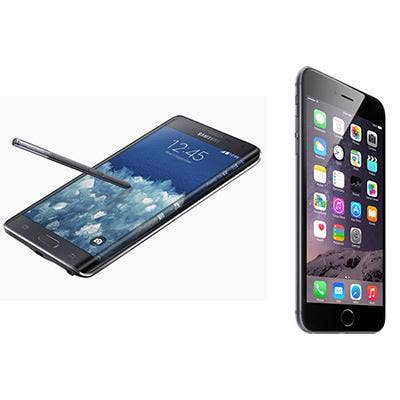
New iPhone vs. Samsung Edge
Apple, always the marketer, unveiled Tuesday a pair of iPhones, most of the features of which were leaked weeks ago and available from competitors for years. Yet the hoopla around the announcement itself was as grand and pompous as ever. Unfortunately, the event fell flat for the online audience. When the live stream wasn't crashing, the sound of the presenter's voice competed with that of a Chinese interpreter.
Still, news of the larger, feature-rich iPhone 6 and iPhone 6 Plus drew multiple standing ovations from the live audience and brought Apple more in line with archrival Samsung and its Galaxy S series smartphones. But Samsung's new Note Edge shows that it's not content to sit on its lead. Here's a rundown of the major differences.
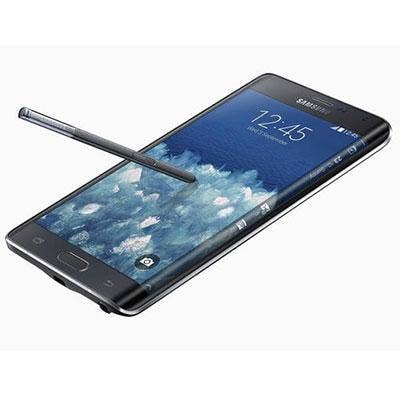
Curvy Displays
Apple has finally made its screens significantly bigger. The 4.7-inch panel of the iPhone 6 will face the world with 1,334 x 750 pixels, which translates to a Retina-caliber 326 pixels-per-inch. The iPhone 6 Plus features a 5.5-inch screen with full-HD 1920 x 1080 pixels, or 401 ppi. Both IPS panels support the full sRGB color space. The glass, which is not made of sapphire as had been rumored, is curved at the edges to melt perfectly into the aluminum case. A great looking phone, to be sure.
Samsung Edge has some curves of its own, and its tapered glass gives it more than just a pretty face. The Edge actually employs two separate LCDs, a 2,560 x 1,140 (525 ppi) main screen and a second panel that's 2,560 x 160 pixels. Both are covered by a touch layer. Samsung moves all notifications to this smaller area, freeing up the main screen for content with "minimal interruption" to the user, according to the company. This clearly offers lots of potential for "wow" news tickers, clock and calendar, launchers, media playback control and lots of others. There's even one that works like a ruler.
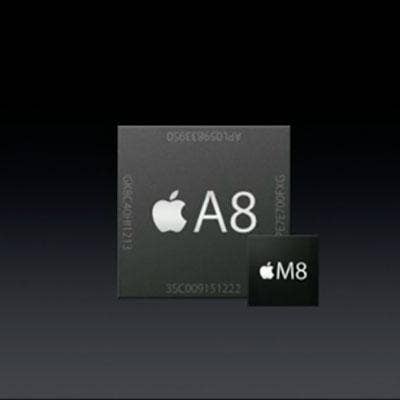
Dual 64 vs. Quad 32
The iPhone 6 will have a new 2.0 GHz processor called the A8. This is a major performance bump from the 1.3 GHz SoC in the iPhone 5s. Compare that with the 2.7-GHz Snapdragon 805 quad-core SoC in the Note Edge. Other things being equal, it would seem logical that four 32-bit processor cores would be just as powerful as two 64-bit ones. But other things are not equal; 64-bit processors can address more than 4GB of memory and their larger registers permit larger packed instructions and more sophisticated code to run with less effort. The latter stuff is great for feature-packing apps with beefing up security, but Apple still supplies just 1GB of RAM compared with Samsung's 3 GB. So until 64-bit Android L is released this fall, a 2.7-GHz quad-core with 3GB will have to stand up to the 2.0 GHz dual-core with one.
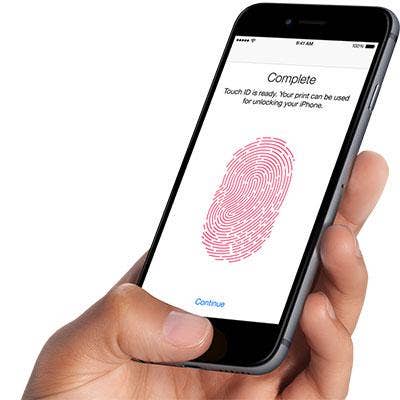
Physical
Finally, a bigger iPhone. The iPhone 6 will measure about 5.4 inches long by 2.6 inches wide by 0.27 of an inch thick. The 5.5-inch iPhone 6 Plus will be about six inches long, 2.8 inches wide and 0.28 of an inch thick. The larger iPhone is close in size to the Edge, which measures 5.9 inches long by 3.2 inches wide by 0.33 of an inch thick. It weighs 6.1 ounces; Apple didn't disclose the weights of its new models. The power button of the new iPhones has been moved from the top to the side next to the volume controls. This is better for one-handed operation. The curved side of the Edge has displaced Samsung's usual right-side placement of its power button to the top, where it no longer causes accidental presses of its opposite-side volume controls and vice versa. The iPhone headset jack is still on the bottom, opposite of Samsung's. Apple's Home button still has a fingerprint scanner and is covered with sapphire.
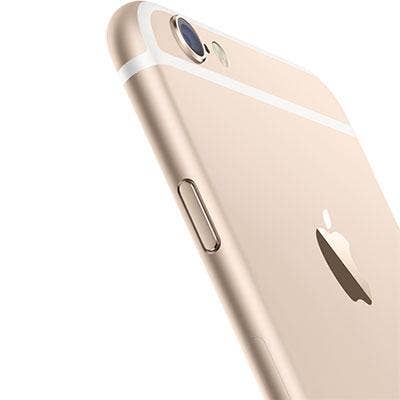
Smiles for the Camera
With main-camera pixel counts growing faster than Russian troops in the Ukraine, it surprised us that Apple's new phones will use the same old 8-megapixel main cameras. Apple has put a new sensor with larger pixels inside along with a bunch of whistles and bells to boost picture quality. Among them is Focus Pixels, a feature borrowed from DSLR cameras that automatically determines the proper focus direction and moves the lens accordingly. Samsung meanwhile has equipped Note Edge with a 16-megapixel main camera like the one on the Galaxy S5. No great surprise there. But what really widened our eyes was seeing a 3.7 MP front sensor looking back at us. Samsung further enhances its face camera with modes for normal and wide-angle selfies between 90 and 120 degrees. Both the Edge and iPhone 6 Plus have optical image stabilization, auto-F and live HDR capabilities.
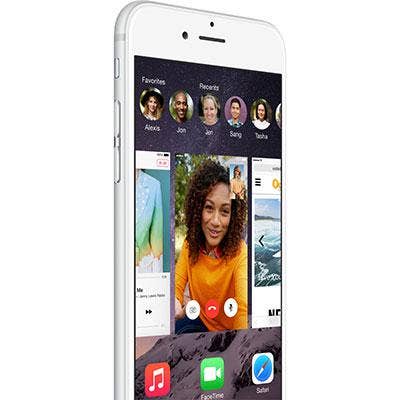
Wi-Fi Call Switching
The long wait for NFC in an iPhone is over, and was presumably due to behind-the-scenes development of Apple Pay, an electronic payment scheme that the company says is already accepted at more than 200,000 locations in the U.S. Both iPhone 6 models and Samsung's Edge offer the usual array of communications capabilities. Most notably are compliance with the high-speed Wi-Fi ac spec and with Bluetooth 4.1, the update from December that eliminates near-band conflicts with LTE and improves protocols for device reconnection and bulk data transfer. Both also can switch seamlessly from cellular to Wi-Fi calling. However, Apple claims that it can do so while a call is in progress; that would be a first.
Edge includes an IR emitter for controlling nearby devices, and Wi-Fi/LTE channel bonding to improve download speeds. Its USB 2.0 port is MHL 3.0 compliant for connecting to monitors and other compatible peripherals. Apple implements its own protocol for displaying iPhone contents.
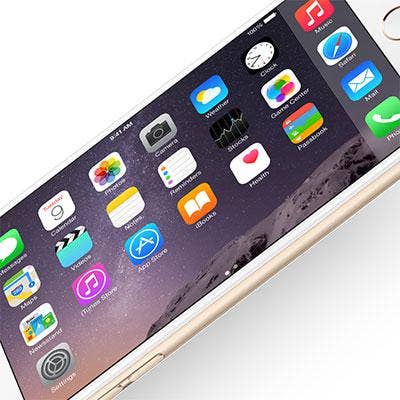
iOS 8 vs. Android 4.4
The new iPhones will be the first devices to include iOS 8, which among other significantly new features will tighten integration with the coming Mac OS Yosemite. Samsung can offer no such boast with Android 4.4, which is still a great mobile operating system in its own right, and is poised this fall to make the leap to 64-bit. Apple meantime will be able to hand off file-editing and browsing sessions from mobile to desktop and vice versa. Other iOS 8 features, such as soft keyboards and interactive notifications, will catch it up with Android, but it still can display just one app at a time. With Samsung's TouchWiz UI overlay, Edge can split the screen between two apps and float a third one on top. It also includes a stylus and some very nice software to go with it.

The Bottom Line
Apple will begin taking orders for the iPhone 6 (from $199) and iPhone 6 Plus (from $299) Sept. 12 for shipment Sept. 19. Devices will be available for AT&T, Sprint, T-Mobile and Verizon. Samsung has not yet released pricing for the Galaxy Note Edge, which will begin shipping this fall for AT&T, Sprint and T-Mobile. Contrary to pre-launch speculation, Apple's new iPhone glass does not incorporate sapphire and the event made no mention of a reversible USB cable.